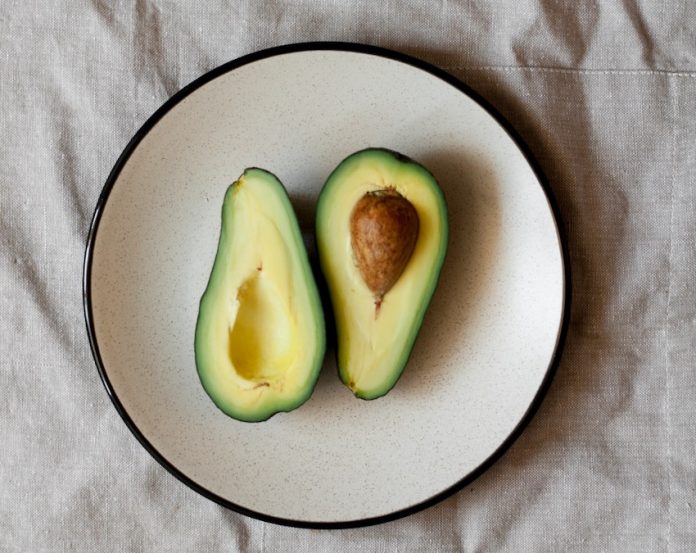With the conquest of what is today known as Mexico, the New World and the Old World experienced an extraordinary exchange of values, knowledge and, of course, food.
While the people in the New World were exposed to wheat, rice, poultry and new meats, the Indigenous people sent Europe corn, tomatoes, chiles, potatoes and chocolate, among other items.
The interaction of both worlds enriched global cuisines and shaped our culinary world into one where many basic ingredients used worldwide originally came from Mexico.
Join us on a brief history of four of the most popular foods Mexico has given the world.
Tomatoes
Many people mistakenly think the tomato is native to Mexico. So why is it on the list, you may ask? Well, because it was the Mexica (Aztec) people who first domesticated it and used it as a cultivated food.
Its name comes from the Náhuatl word xitomatl (shee-tomatl), which means “water fruit belly button.” It then turned to jitomate in Spanish and to “tomato” in English. In Mexico, jitomates are the red tomatoes and tomates, or tomatillos, are the small green ones used to prepare salsa verde.
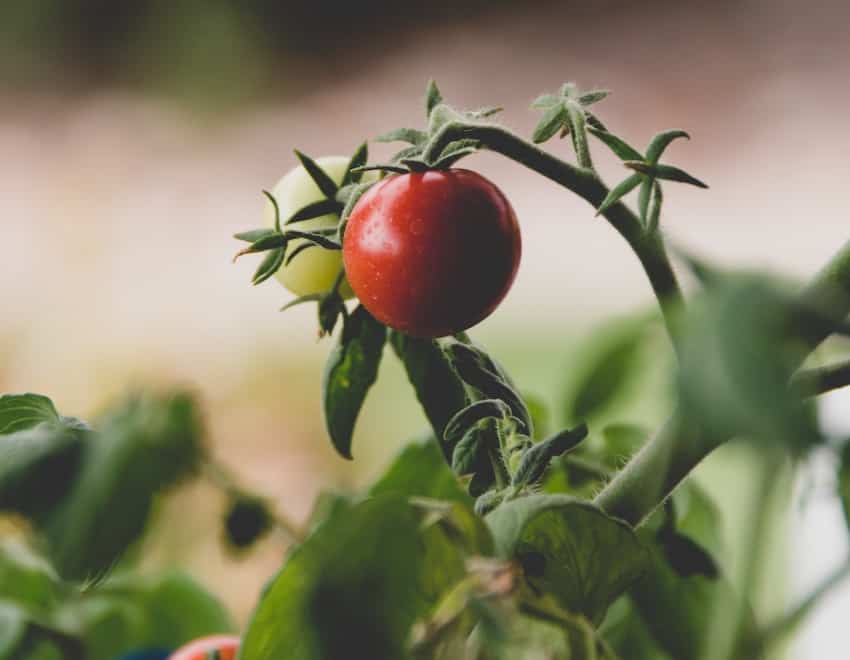
The ancestral form of the tomato originated in the Andes mountains. Scientists think the species spread north — possibly as a weed — and wasn’t widely domesticated until it reached Mexico. From here, it was taken back to Europe after the arrival of the Spanish.
The tomato has become a staple in many international dishes (you’re probably thinking pizza and pasta!) and is also the basis of many Mexican recipes. It is now so widespread that it is hard to think of a household kitchen without it.
Today, there are some 10,000 different species of tomato cultivated across the world, ranging in size and color. While Mexico has always been one of the 10 top producers of tomatoes, (4 million tonnes per year) China leads worldwide production with 56.4 million tons. The United States comes in third with 13 million tons produced a year.
Chocolate
Its name is spelled almost the same way in many languages. In Spanish, Portuguese and English, it is chocolate. In Dutch, it is chocolade, and in French chocolat. Even in Arabic, it’s pronounced shwukulata.

All these words have the same root: the Náhuatl word xocolatl, meaning “bitter water.” Some scholars, however, suggest that the word might have originated from the Maya chokol, which means hot, and a, which means water.
Whatever the origin, both Indigenous civilizations thought of chocolate as a sacred drink.
The Maya, for instance, praised it as the drink of the gods — it was regarded not only as a culinary pleasure but also as a ceremonial beverage. Babies were anointed with chocolate, and people used it as a celebratory drink to mark weddings, coronations and the forging of diplomatic alliances.
Later, the Mexica would use chocolate as an invigorating beverage for warriors. Spanish conquistador Bernal Díaz del Castillo wrote that Emperor Moctezuma’s personal guards drank 2,000 cups of chocolate every day “with foam.” Moctezuma himself drank some 50 cups of chocolate daily, and Spanish Conquistador Hernán Cortés adopted the habit to sustain his soldiers during battle at times when they had no other food.
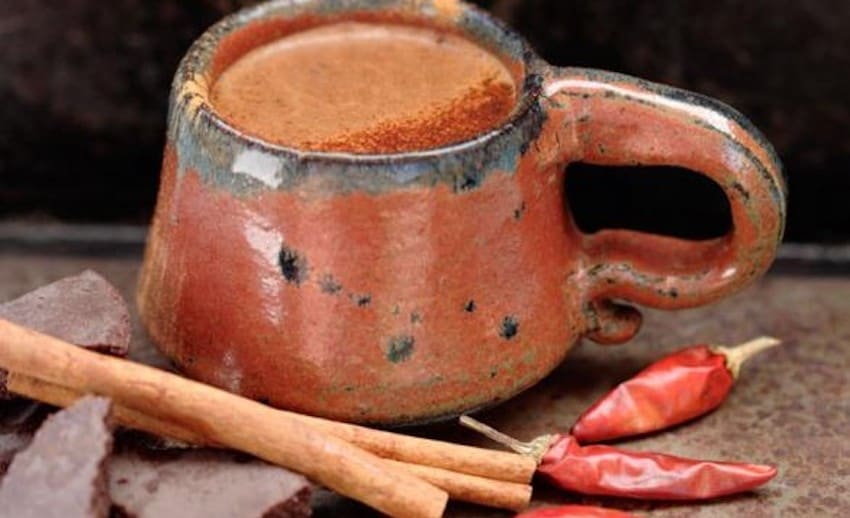
While the beverage wasn’t sweet, it was considered a delicious drink exclusively for society’s elite. They drank it as a hot beverage in the winter months and as a cold drink in the summer. It had a bitter flavor and was spiced with chile, flowers and vanilla. Women would pour the chocolate from high above the cup to create a foamy effect.
Chocolate was also preferred over the fermented spirit pulque as it didn’t have any alcohol; the Mexica culture highly condemned drunkenness.
After the Spanish arrived, they transformed the beverage into the sweet treat that we know today by adding sugar, almonds and cinnamon and by removing all other spices except for the vanilla, our next stellar ingredient.
Vanilla
Vanilla has become the most common flavor around the world. In its natural form, it can be almost as expensive as saffron, the world’s most pricey spice.
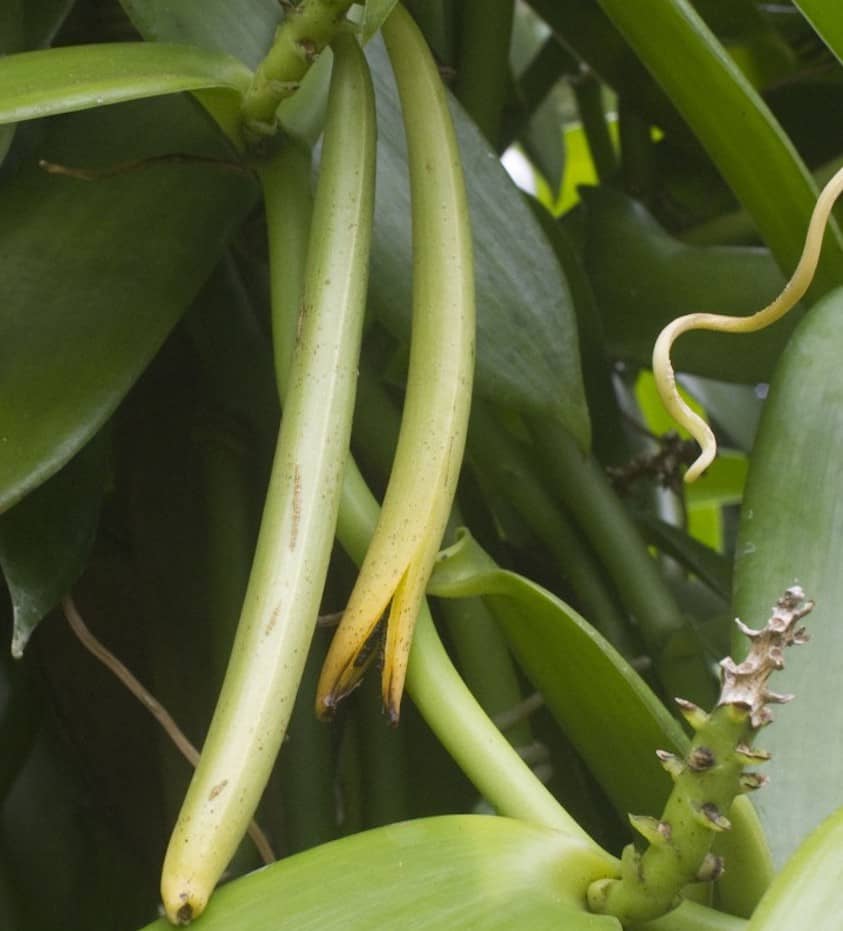
Originally from the jungle highlands of the north-central state of Veracruz, the orchid that produces vanilla was first domesticated by the Totonaca people of Papantla. When the Mexica conquered the Totonacs in 1427, they discovered the vanilla pods and started using them medicinally and as flavoring for their food.
In the Totonaca language, vanilla was known as xahanat (shaHanat), which means “black flower.” When the Spanish conquistadors arrived in Mexico and discovered the orchid, they called it vainilla, which means “little pod.”
Vanilla became so popular in the world that people tried to bring it to other countries, but the vanilla orchid could only grow here because the Melipona bee, responsible for its pollination, only lived in eastern Mexico.
As a result, Mexico was the only producer of vanilla worldwide until 1841, when French botanist Edmond Albius discovered manual pollination.
Despite the orchid originating in Mexico, Madagascar is currently the world’s top producer of vanilla. Other producing countries include, of course, Mexico, as well as Tahiti, Uganda and Indonesia.
Avocado
Unmistakably Mexican, the avocado is a fruit (yes, technically it is a fruit not a veggie) loved across the world and has managed its way into even the most traditional of foreign cuisines. In India, people make curried avocado. Ethiopians mix avocado with papaya, mango and mint to create a refreshing beverage in the hot summer months, and in the Philippines, people mix avocado with sweetened condensed milk and ice to eat it as ice cream.
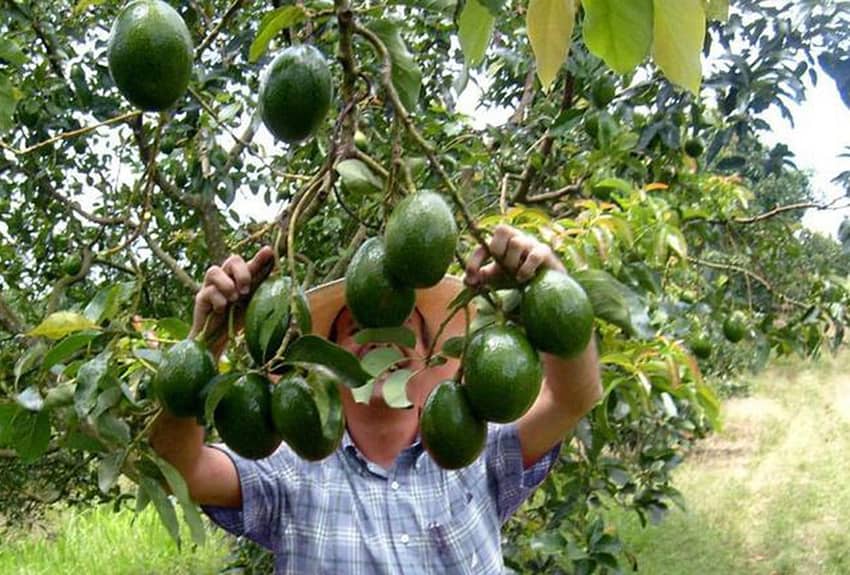
As with most of the produce listed in this story, the name avocado comes from the Náhuatl: the word ahuacatl means “tree testicles.” The Mexica thought the avocado had aphrodisiac properties and that it promoted fertility in both men and women.
Puebla, in the central Mexico highlands, is believed to be the motherland of the avocado. There, researchers have found vestiges of the fruit that can be traced back to over 10,000 years. Experts also believe that Mesoamerican tribes first domesticated the avocado tree (Persea americana) 5,000 years ago, which would make the cultivation of avocados as old as the invention of the wheel.
Perhaps due to its creamy and delicious flavor, the avocado was highly regarded by Mesoamerican cultures. The 14th month of the Mayan calendar (K’ank’in) is even represented by the glyph for an avocado.
In Mexico, avocados are traditionally used for savory dishes, mainly in the form of guacamole. But thanks to globalization, Mexicans have learned that it can also satisfy a sweet tooth.
By Mexico News Daily writer Gabriela Solís
